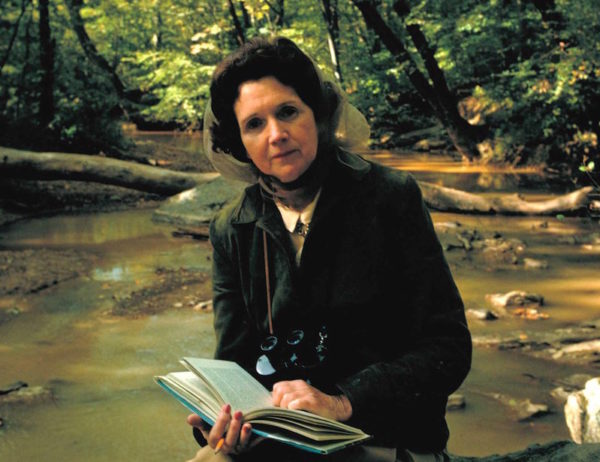Rachel Carson knew she would be criticized for connecting pesticides to the death of songbirds when Silent Spring was published in 1962. As a scientist, though, she didn’t expect to be vilified by an entire industry, or to be called an alarmist and Communist.
Despite the attacks, she had the courage to keep going, all the way to the White House where she met with President John F. Kennedy’s Science Advisory Committee, and to Capitol Hill where she testified before senators.
That determination is what ultimately made Carson the most significant American environmentalist of the past century, and why she’s been an inspiration to me since I was a teenager.
Carson opened our eyes to the harm we were doing to the environment, ultimately making our nation a better steward of our natural heritage. Everyone in the environmental community follows in her footsteps.
It’s been nearly 50 years since Environmental Defense Fund was founded on her legacy. We, like so many of our peers, are part of a long green line that started with her signal work, relentlessly following the science, even when it leads to unexpected places.
We work every day to open eyes – just like Carson did in the early days of the environmental movement.
“Who can carry on my work?”
In 1985, I found myself in a magnificent villa perched on a cliff overlooking the Pacific Ocean on the central California coast. It belonged to Margaret Owings, an EDF trustee, and great protector of wild animals.
We sat in her living room with a spectacular view of the ocean when Margaret told me a moving and humbling story. More than two decades earlier, before Carson’s untimely death from breast cancer, the two women had met in New York City when Carson received the Audubon Medal.
After the ceremony, they had talked about the future of environmentalism and how to keep the fledgling movement alive. Carson, who was very ill, told Owings she didn’t know who would carry on her work.
Her words made a big impression on Owings. Recounting their meeting to me, she said she had since felt almost a personal responsibility to continue the fight, to take the baton.
Her story helped me see the power of continuity. It was as if Carson was still there with us, telling us to keep going.
We’ve come a long way since Silent Spring, but we also know our work will always go on.
With a vote in Congress or the rap of a judge’s gavel, protections for which our activists worked years can be weakened or eliminated.
We know that in an instant, environmental progress can be reversed, and that requires vigilance by all of us. With a vote in Congress or the rap of a judge’s gavel, protections for which our activists worked years can be weakened or eliminated.
When that happens, we just get back up, dust off and continue the fight. Because we know that environmental stewardship is good for the economy, for business and for people.
Unlike Carson in her day, we can now mobilize the support of hundreds of thousands, even millions, and we have the backing of a new generation of leaders.
The founder of Moms Clean Air Force, with half a million activists, Dominique Browning is one such leader working for a clean and healthy environment. It makes her a fitting recipient of Audubon’s Rachel Carson award later this month.
By enlisting parents and educating others about what’s happening to our air and climate, Browning and her organization have made a real difference for America’s children and grandchildren. This is in the best tradition of Rachel Carson.
She, too, is part of that green line running from one decade to the next, and from one courageous leader to another, as we continue our work, day in and day out, to defend our environment.
Source: Environmental Defense Fund
Women of Green is TURNING UP THE VOLUME of the feminine voice on the planet in order to create the world we know is possible.
